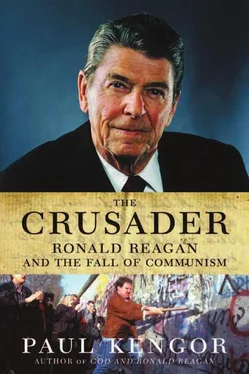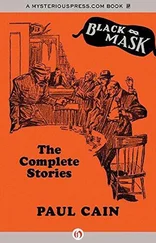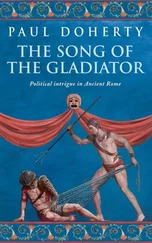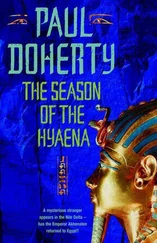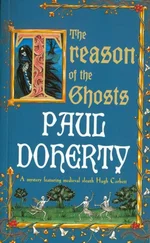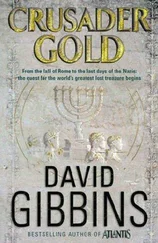Harvard’s renowned presidential scholar Richard Neustadt, who said Reagan gave Americans a sense that “all was well,” recalled that watching Jimmy Carter in the presidency, one had to wonder if the presidency was “even possible.” Neustadt speaking on documentary, “The American President,” PBS, WNET-New York, 2000. Neustadt also said this in his classic work, Presidential Power.
Some political scientists refer to this rebirth of morale, for both the office and the country, as the “symbolic” aspect of Reagan’s presidency. It was a key factor driving his surge upward in late 1990s rankings of presidents. Among those surveys was a major 2000 poll by the Federalist Society and the Wall Street Journal, where Reagan ranked as the eighth best president ever, placing him in the “near great” category. A key factor in Reagan’s rising stock at the time was the 1990s erosion of the symbolic element of the presidency, due to the private behavior of President Bill Clinton. University of Louisville Political Scientist Gary Gregg spoke to this: “The symbolic aspects of the presidency are well under-rated…. This is one reason Reagan should be ranked higher than he generally is.” See James Lindgren, “Ranking Our Presidents,” 11. There are countless academic authorities that credit Reagan with restoration to the nation and the presidency: Larry Berman, A. E. Jeffcoat, James T. Patterson, Robert Dallek, Christopher Layne, and others. See Larry Berman in Berman, ed., Looking Back on the Reagan Presidency, 5, 8–9. A. E. Jeffcoat, From Covered Wagons to Clinton (Bainbridge Island, WA: Winslow House Books). James T. Patterson in James M. McPherson, ed., “To the Best of My Ability,” The American Presidents (New York: Dorling Kindersley, 2000), 288.
There are many more. Boston University’s Robert Dallek says that Reagan “did more to restore a measure of confidence in the institution of the presidency than anything since the Kennedy administration.” International relations scholar Christopher Layne, who was so critical of the Reagan Doctrine that he predicted it “would lead the administration into a political and moral morass,” later conceded that, “The Reagan administration did restore the national pride and self-confidence that had been damaged by Vietnam and the 1979–80 Iran hostage crisis.” Dallek interviewed on “Reagan,” The American Experience, PBS. See David Boaz, ed., Assessing the Reagan Years (Washington: Cato Institute, 1988), 95, 108.
Ed Harper of the Brookings Institution said that, “One of the most important things Ronald Reagan did was to erase the attitude of defeatism.” This, he goes so far to say, was a defeatism “not only about the manageability of government but also about the future of the planet.” Harper points to the calamitous forecasts of the Club of Rome report. “The Carter administration had bought the Club of Rome Report hook, line, and sinker,” he asserted. “The Club of Rome made all kinds of dire predictions, saying that by the 1990s we would be turning out lights all over the world….There was a defeatism in the last years of the Carter administration that we haven’t seen since.” Ed Harper testimony before University of Virginia Miller Center is published in Thompson, ed., Leadership in the Reagan Presidency, Pt II: Eleven Intimate Perspectives (Landham, MD: University Press of America, 1993), 133. Historian Alonzo Hamby agrees, writing that among Reagan’s accomplishments, “He had brought back the presidency from its lowest ebb since Hoover.” Commenting on Reagan’s unimpressive showing in one of Arthur M. Schlesinger, Jr.’s presidential greatness polls, Hamby assures: “When passions cool after a generation or so, Ronald Reagan will be widely accepted by historians as a near-great chief executive.” “Most of all,” said Hamby, Reagan “restored the nation’s confidence and had affirmed its faith in the future.” He said that Reagan “excelled” in the “job” of the “restoration of confidence.” Reagan was an “uplifter,” an “outstanding national cheerleader.” See Hamby in Adam Meyerson, ed., “How Great Was Ronald Reagan,” Policy Review, no. 46 (Fall 1988), 32–33. From this symposium, also see the observations from George H. Nash and James Nuechterlein on pages 34–36. On Hamby, see Alonzo Hamby, Liberalism and Its Challengers (New York: Oxford University Press, 1992), 376, 388. Strong words also come from Cold War expert John Lewis Gaddis, who was impressed at how Reagan after only his first few months in office had “managed to project—and therefore instill—a degree of self confidence that went well beyond anything his predecessor had achieved.” Gaddis, “Hanging Tough Paid Off,” 60–63.
8. Not surprisingly, Reaganites inside and outside the administration lauded the president for boosting spirits. These include Don Regan, Larry Speakes, Peter Rodman, and many more. See Donald Regan, For the Record (San Diego, CA: Harcourt Brace Jovanovich, 1988), 244; Larry Speakes, Speaking Out (New York: Scribner, 1988), 308; and Rodman, More Precious Than Peace, 542. Adam Meyerson of the Heritage Foundation cleverly referred to Reagan as the Great Rejuvenator. Burton Yale Pines concluded: “The mood in the 1970s was tragic… dreadful. Reagan reversed and healed this. See Burton Yale Pines, speech at the China Association for International Friendly Contact, the People’s University of China, and the Shanghai Institute for International Studies, October 1988, published in Policy Review, Spring 1988.
9. Among them, journalist Michael Ruby, who wrote the lengthy U.S. News & World Report final assessment of the Reagan presidency, estimated that, “historians will conclude that it was during the Reagan decade that the U.S. finally overcame its Vietnam-induced loss of national nerve.” Ruby finished with this: “[H]e has helped the nation regain its self-confidence…. Ronald Reagan convinced most of his countrymen that it was still morning in America. See Michael Ruby, “The lessons of the Reagan era,” U.S. News & World Report, January 9, 1989, 18–26.
Over a full decade later, in February 2001, a vigorous debate over Reagan’s legacy took place on the popular CNN political show “Capital Gang.” A heated exchange ensued between conservative Robert Novak and liberals Mark Shields and Al Hunt. Shields and Hunt were critical of Reagan, finding much to still dislike. Both, however, agreed that he must be credited with “turning around” the presidency and the country at a time that seemed “ungovernable,” as Hunt put it, with Shields voicing agreement. Mark Shields and Al Hunt on “The Capital Gang,” CNN, February 10, 2001.
The examples in the days after Reagan’s death could fill a book, and are not quoted here. 10. Mike Wallace speaking at conference, “The Reagan Legacy,” Ronald Reagan Library, Simi Valley, CA, May 20, 1996; and Sidey speaking on documentary, “The American President,” PBS, WNET-New York, 2000.
Reagan biographers agree. Lou Cannon has said so repeatedly. In his 1991 Role of a Lifetime, he wrote of how Reagan’s speeches “did succeed in reviving national pride.” See Cannon, Role of a Lifetime, 292. Also, in a 1999 C-SPAN interview, Cannon said that Reagan “restored America’s confidence at a time when it was very low. He convinced the American people to believe in themselves again.” In a 2001 CNN documentary, Cannon credited: “I think he’ll be remembered as the person who restored hope and confidence to a country when it was really troubled.” Cannon interviewed by Brian Lamb on C-SPAN’s “American Presidents” series, December 6, 1999; and Cannon interviewed for CNN documentary, “The Reagan Years: The Great Communicator,” Pt. II of series, CNN, February 2001.
11. In a way, “overnight” is not a stretch by Morris: On the day Reagan was inaugurated, those hostages in Iran were released—a huge shot in the arm for Uncle Sam, though it would be a big mistake to think the hostage release alone put the nation back on track. By 1984, however, it was certainly back. See Morris in Wilson, ed., Power and the Presidency, 125–26. Also, Edmund Morris interviewed by Leslie Stahl of “60 Minutes,” September 26, 1999. 12. Doug Gamble, “On patriotism, the Gipper and Bill Clinton,” The Los Angeles Times, December 17, 1999.
Читать дальше
